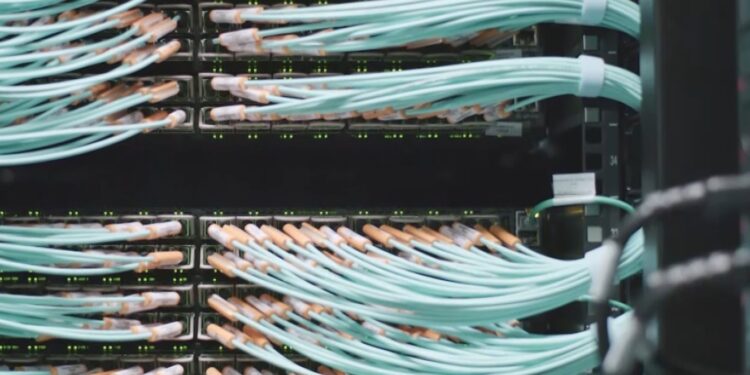LANSING, Mich. (WZMQ) – Artificial intelligence is transforming the way we live and work—but as AI tools become more embedded in daily life, scientists and lawmakers are raising concerns about their environmental costs.
From classrooms to corporate offices, AI-powered platforms like ChatGPT are increasingly common. Schools are rushing to adapt as students rely more heavily on AI, while lawmakers across the country are racing to keep pace with policies that aim to prevent the misuse of the technology.
“Even if people don’t want to admit it in all instances, everybody loves it,” said Mohammad Ghassemi, assistant professor of computer science and engineering at Michigan State University. “It’s so useful.”
But that usefulness comes with a cost. Training large AI models requires massive amounts of computing power, much of it housed in sprawling data centers that consume enormous amounts of electricity and water. Climate scientists say the environmental footprint of AI is quickly becoming impossible to ignore.
“People are aware it’s a problem,” Ghassemi said. “We can’t continue to throw out a glass of water’s worth of energy every time we want to ask a question of a bot. It’s not sustainable.”
At both the federal and state levels, lawmakers are exploring ways to limit AI overuse and curb the environmental impact of data centers. But proposals to regulate energy use or place environmental limits on AI development have not been popular.
“There are limits, right, to what consumers and individuals can do,” Ghassemi said. “And I think that’s where regulation and policy are supposed to step in and play a role.”
Still, Ghassemi suggests that responsibility shouldn’t fall entirely on lawmakers. He says both users and developers of AI tools should adopt a more thoughtful approach.
“Maybe there is a thoughtfulness we expect on the part of consumers of AI tools,” he said. “Maybe there needs to be, for lack of a better term, a lower bound—or some equivalent of a speed limit, if you will.”
As AI continues to evolve, Ghassemi believes the real challenge will be striking a balance between innovation and environmental responsibility.

















